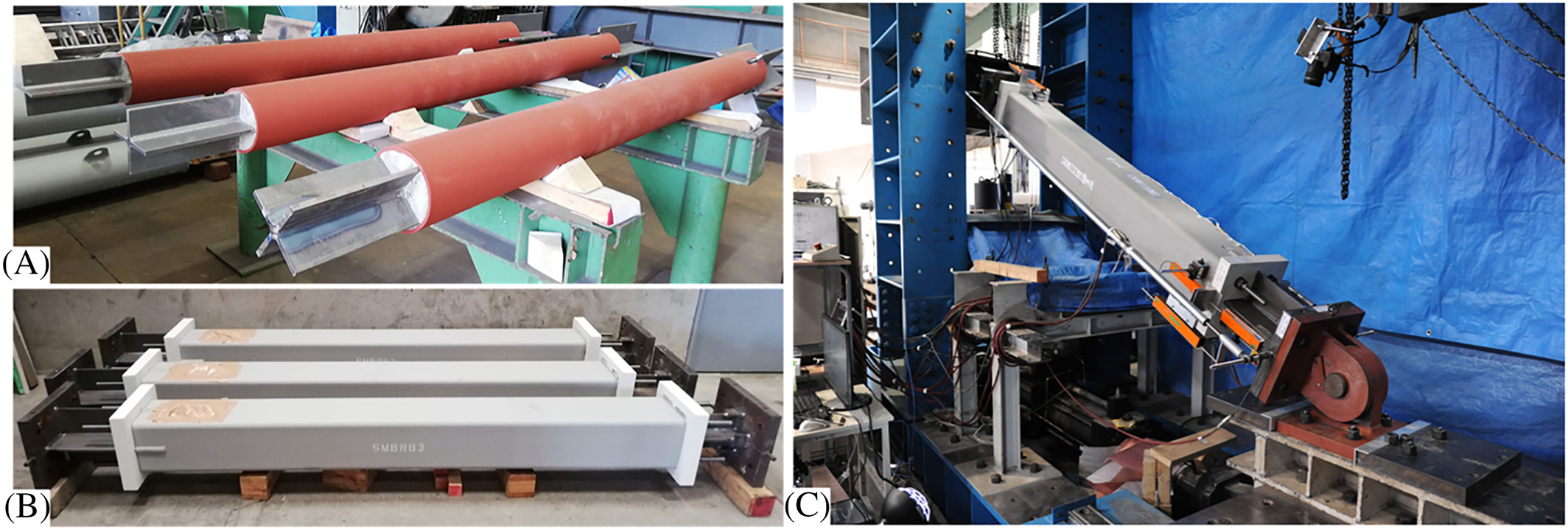骨組を剛接ラーメン架構として水平抵抗に利用する日本とは異 なり,海外では柱梁をピン接合として鉛直荷重のみを負担させることが多く,耐震設計時は地震後の残留変形および特定層への損傷集 中が課題3)となる。これに対し海外では,BRB に初期張力材を付加 することで原点復帰(セルフセンタリング)機能を持たせ,架構の残留変形を抑制するセルフセンタリングBRB(SC-BRB)の提案が行われてきました。本研究では,初期張力材に高い伸び性能を有する炭素繊維複合材ケーブルを採用し,バイリニア型とフラッグ型の中間の復元力特性を有するSC-BRBを新たに提案し,性能確認実験を行いました。短期滞在でやってきたトルコ人の博士課程学生のお手伝いでした。論文はこちら
There has been an increasing interest in using residual deformation as a seismic performance indicator for earthquake resistant building design. Self-centering braced structural systems are viable candidates for minimizing residual deformations following a major earthquake. Hence, this study proposes an alternative type of buckling restrained brace (BRB) with externally attached posttensioned (PT-BRB) carbon fiber composite cables (CFCCs). The steel core of the brace is used as an energy dissipator, whereas the CFCCs provide the self-centering force for minimizing residual story drifts. Three proof-of-concept specimens are designed, fabricated, and cyclically tested at different posttensioning force levels. The CFCC behavior to obtain cyclic response, including the anchorage system, is examined closely. A parametric study is also conducted to show the effect of the different configurations of PT-BRBs on the inelastic response. Furthermore, optimal brace parameters are discussed to realize design recommendations. The results indicated that the implementation of partially self-centering BRBs in building frames can lead to the target residual displacements. A stable behavior is obtained for the proposed PT-BRBs when subjected to the loading protocol specified in the American Institute of Steel Construction (AISC) 2016 Seismic Provisions.
